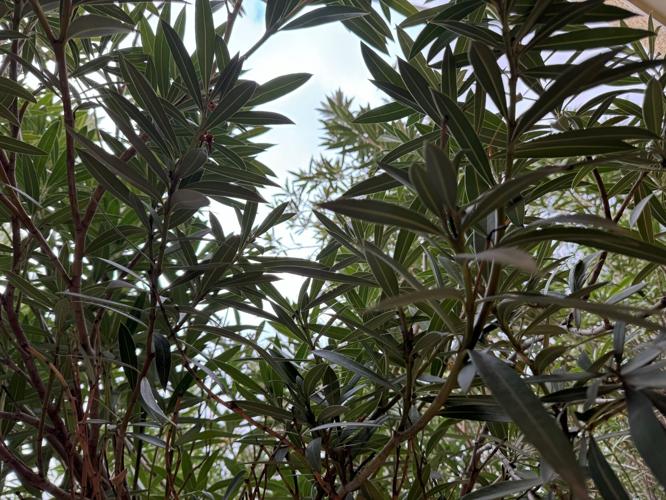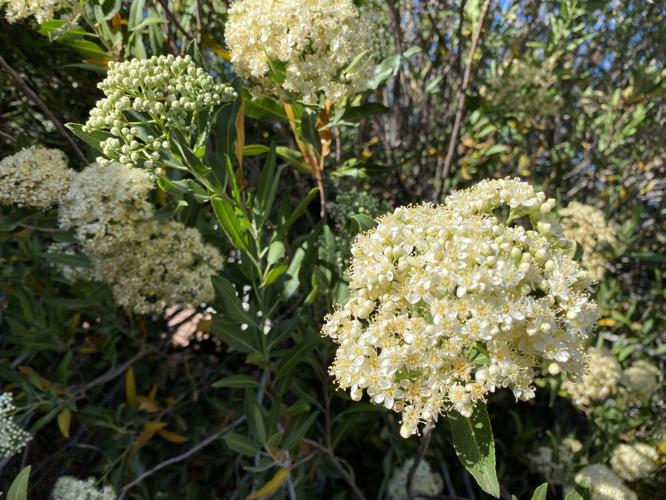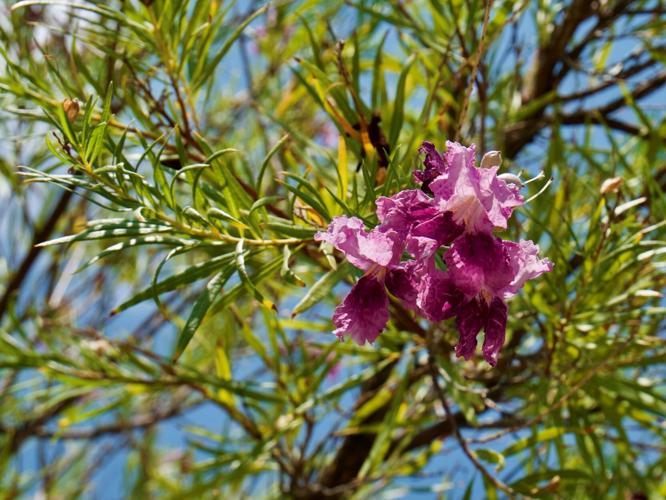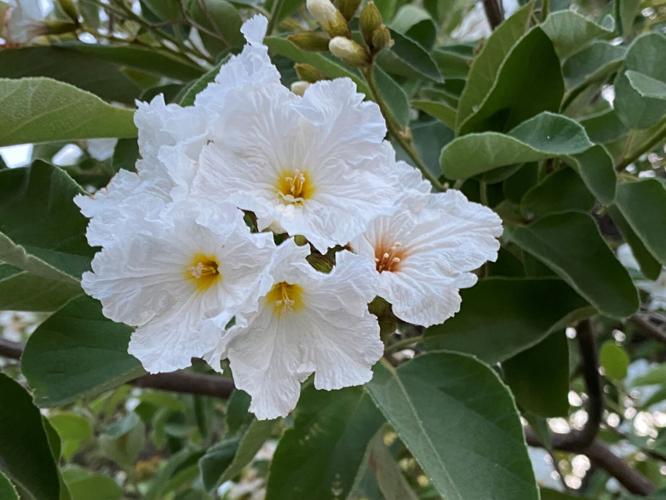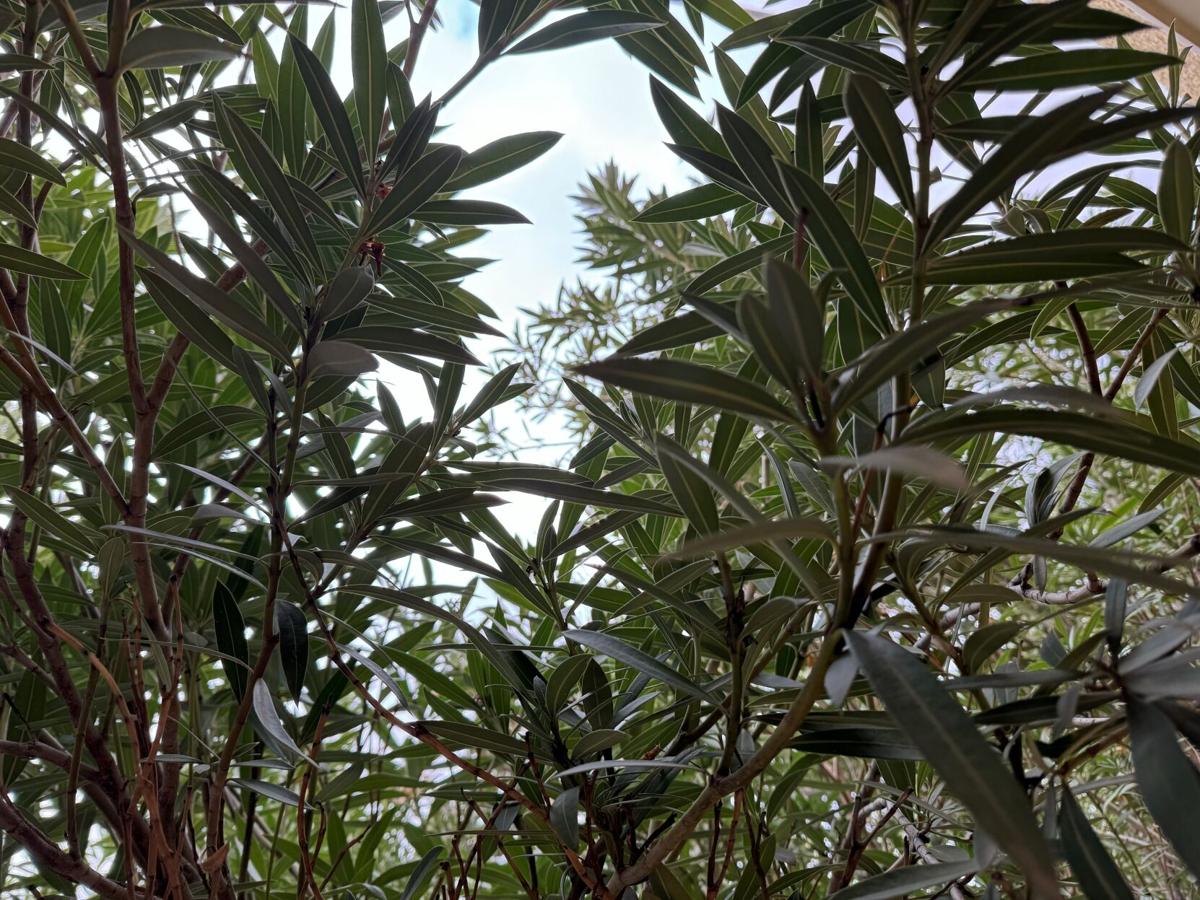Oleanders (Nerium oleander) originate in the Mediterranean, and are well-suited to our dry, hot climate. They are drought-tolerant, can handle very poor soils, and have lovely flowers. So why am I so down on them?
There are a couple of reasons. First, oleanders are not native to our region, and offer almost no ecological benefit to our wildlife — just the opposite, in fact. They lure our pollinators in with the promise of nectar and do not provide them any. The plant has also been known to act invasively and has been found growing spontaneously in Saguaro National Park. The U.S. Forest Service considers it an invasive weed.
Second, they are deadly poisonous — all parts of the plant are very toxic to pets, horses and people. One leaf is enough to kill a fully grown adult, so you can imagine its effect on children and small pets. Even the wood is unsafe to burn as the smoke is fatal if inhaled. If you are pruning oleanders, you need to wear thick protective clothing and eyewear, and I would recommend a mask, as well, so you don’t inhale any small particles.
From a landscaping design standpoint, oleanders are a very boring choice for your yard. They were overused for decades, and now are almost ubiquitous, particularly in older Tucson neighborhoods. They are used as large hedges, ornamental accents and privacy screens. When they bloom they look nice, but for the most part they are a snooze-fest.
As a final negative point, oleanders are prone to leaf scorch, a bacterial disease that kills them within a couple of years once symptoms show. There is no remedy for this, so if you see it on your oleanders you should start planning a replacement.
I recommend hiring professionals to remove your oleanders, particularly large ones. The root balls need to be removed so that the plant doesn’t re-sprout. Also, protective equipment is required, as mentioned above, so that the plant’s toxins do not cause major health issues during removal. The sawdust, leaves, flowers and dried plant material must all be avoided so you don’t suffer effects of the toxins.
There are countless native (Sonoran Desert) and near-native (Chihuahuan desert) plants that can perform many of the same design tasks in your yard, but which also have the added benefits of providing food and habitat for our birds, insect pollinators, and other small critters which form the base of our ecological web. They are a much more interesting design choice, as well as a more sustainable one. Here are five of them.

The desert willow (Chilopsis linearis) is a small native tree that comes in multiple colors and serves as habitat and food for native birds. It’s a great alternative to the toxic oleander.
Desert willow (Chilopsis linearis): This beautiful native tree grows in our riparian areas. It can be pruned to tree form or can grow as a large tall shrub (up to 15 feet tall). It’s winter-deciduous, so it may not be the best choice if you’re looking for a screening shrub. However it’s a lovely accent plant and has gorgeous orchid-like flowers which come in a variety of colors from very light pink through dark burgundy. It requires no maintenance and produces less litter than oleanders, particularly if you get the seedless varieties. It’s a beloved tree of native hummingbirds.

This female hopseed bush has attractive papery seeds which birds love.
Hopseed bush (Dodonaea viscosa): Another one of my favorites, this shrub is evergreen, fast growing and makes an excellent screen. The leaves are a lush, fresh green and while it doesn't’ flower, the female plants produce beautiful papery light green seeds in the spring which, in my opinion, are just as lovely as flowers. It’s drought-tolerant but will need a bit of extra water to keep it looking its best. However, once it’s established, it’s completely maintenance free.

The Texas olive is a near-native and has gorgeous clusters of 1-inch white flowers.
Texas olive (Cordia boissieri): This native of the Chihuahuan desert is evergreen and can grow in tree or shrub form. The oval, deep green leaves and stunning papery white flowers make this one of the most beautiful additions to a yard in our climate. It can grow around 10 feet tall and works as either an accent plant or a screening shrub.
Arizona rosewood (Vauquelinia californica): This large shrub grows to 15 feet and is evergreen. Its leaves are similar in shape to the oleander, but are a darker green. It has lovely creamy flowers in the spring, followed by decorative seedheads. It’s a wonderful screening shrub but it grows relatively slowly. This shrub provides lots of habitat for native birds.

The Arizona rosewood is a large native shrub with large white clusters of flowers and dark green foliage.
Desert hackberry (Celtis pallida): This evergreen hackberry brings all the birds to your yard. It is a large shrub and grows to around 10 feet tall, although it can grow considerably taller if watered frequently. There is also a native tree called canyon hackberry (Celtis reticulata) which grows to 50 feet so don’t confuse the two. Both are riparian trees in the Sonoran desert, but are very drought-tolerant. The desert hackberry is very dense and thorny, and it makes a great screen or fence but isn’t the best for areas with frequent traffic. Give it plenty of room. The berries are edible for wildlife and for humans.
Pet owners may be shocked to find out that dogs and cats can become very sick from eating bouquet-favorite flowers. Buzz60’s Maria Mercedes Galuppo has the story.


